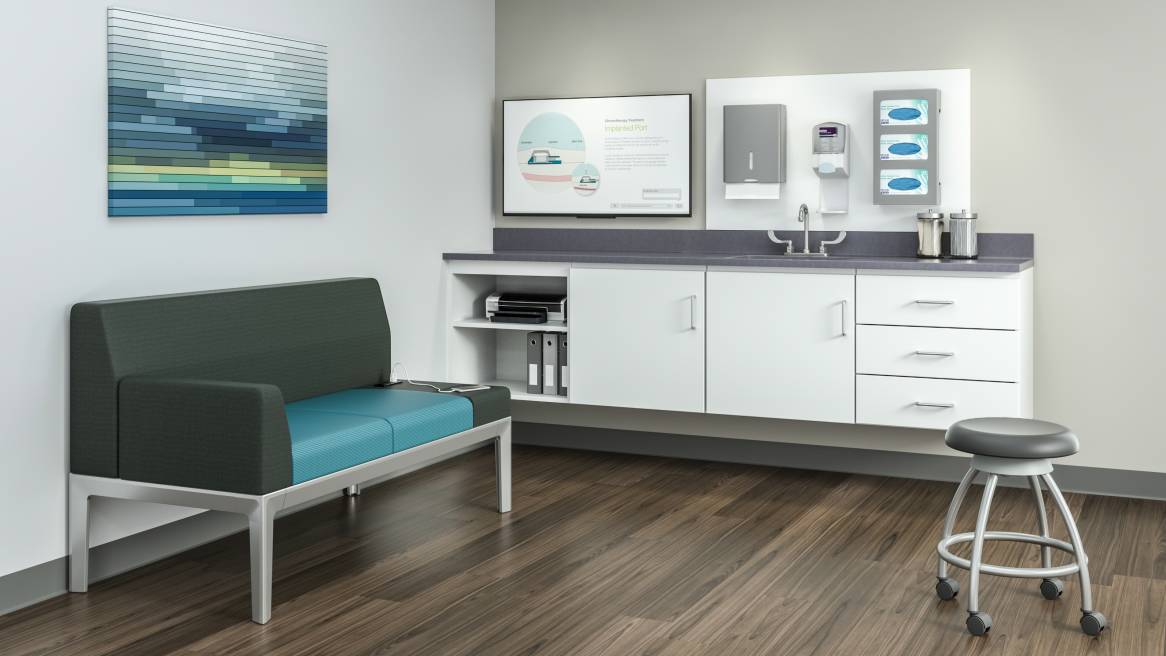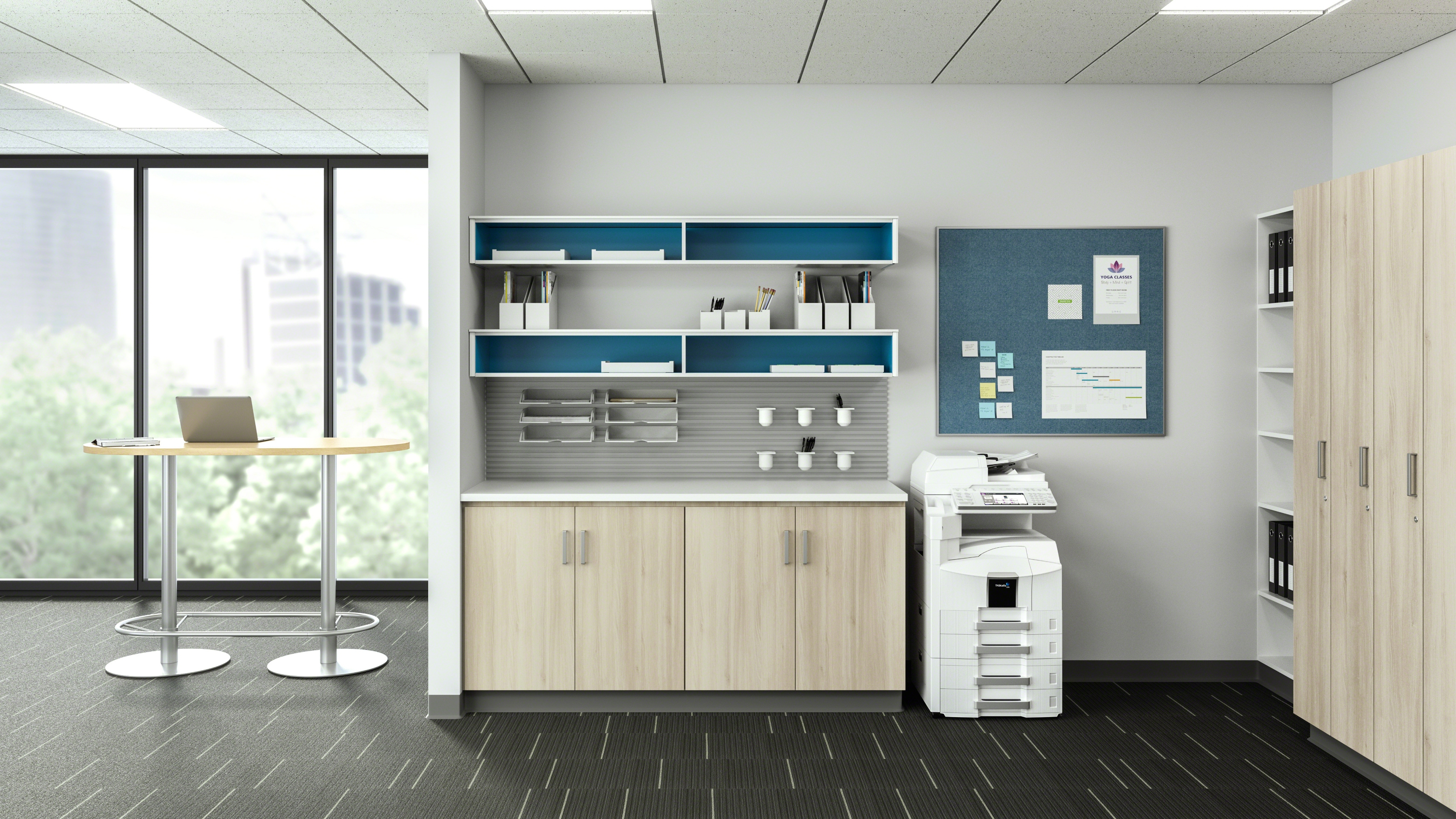Exam Room Wall Cabinets Essentials

Exam room wall cabinets are essential fixtures in medical settings, providing organized storage for medical supplies, equipment, and patient records. These cabinets play a crucial role in maintaining a clean, efficient, and safe environment for both healthcare professionals and patients.
Storage Capacity and Accessibility
Exam room wall cabinets are designed to maximize storage space within a limited area. They offer ample room for storing various medical supplies, equipment, and patient records. The cabinets are typically equipped with adjustable shelves, allowing for customization to accommodate different sized items. This flexibility ensures efficient use of space and easy access to essential materials.
Organization and Efficiency, Exam room wall cabinets
Well-organized exam room wall cabinets contribute significantly to a streamlined workflow. They help to prevent clutter and ensure that all necessary supplies and equipment are readily available. This reduces the time spent searching for items and allows healthcare professionals to focus on patient care.
Types of Exam Room Wall Cabinets
Exam room wall cabinets are available in various styles and materials to suit the specific needs of a medical practice.
Materials
- Steel: Steel cabinets are durable and resistant to scratches, dents, and corrosion. They are often used in high-traffic areas and are suitable for storing heavy items.
- Laminate: Laminate cabinets are more affordable than steel cabinets and are available in a wide range of colors and finishes. They are a good option for medical practices that prioritize aesthetics.
- Wood: Wood cabinets offer a more traditional look and can be customized to match the decor of a medical practice. However, they may be more susceptible to scratches and dents.
Styles
- Base Cabinets: Base cabinets are floor-mounted cabinets that offer ample storage space. They are often used in conjunction with wall cabinets to create a complete storage system.
- Wall Cabinets: Wall cabinets are mounted on the wall and are ideal for storing items that are frequently used. They can be installed at different heights to maximize accessibility.
- Corner Cabinets: Corner cabinets are designed to fit in tight spaces and are perfect for maximizing storage in small exam rooms.
Functionalities
- Lockable Cabinets: Lockable cabinets provide secure storage for confidential patient records and medications.
- Integrated Lighting: Some cabinets feature integrated lighting that illuminates the interior, making it easier to locate items.
- Adjustable Shelves: Adjustable shelves allow for customization to accommodate different sized items.
- Pull-Out Drawers: Pull-out drawers provide easy access to items stored at the bottom of the cabinet.
Designing and Installing Exam Room Wall Cabinets

Designing and installing exam room wall cabinets is crucial for creating a functional and efficient healthcare environment. A well-planned layout ensures that all necessary equipment and supplies are readily accessible, improving patient care and staff productivity.
Exam Room Layout Design
The layout of an exam room should be designed to optimize workflow and efficiency. Wall cabinets play a significant role in this design by providing storage space for medical supplies, instruments, and patient records. Here are some factors to consider when designing an exam room layout:
- Patient Flow: The layout should facilitate a smooth patient flow, minimizing unnecessary movement and wait times. Consider the typical patient flow from entry to examination and exit, ensuring that all necessary equipment and supplies are within easy reach.
- Staff Workflow: The layout should support efficient staff workflows, allowing for easy access to frequently used supplies and instruments. This includes minimizing steps and maximizing the use of vertical space.
- Ergonomics: The layout should consider ergonomic principles to minimize strain on staff. This includes ensuring that frequently used items are within comfortable reach and that work surfaces are at an appropriate height.
- Safety: The layout should prioritize safety, with adequate space for movement and storage of potentially hazardous materials. This includes ensuring that sharp objects and medications are stored securely.
Wall Cabinet Placement and Configuration
The placement and configuration of wall cabinets are critical for maximizing their utility and minimizing clutter. Consider these factors:
- Placement: Place cabinets strategically to avoid obstructing doorways, windows, and patient examination areas. Consider placing cabinets above sinks or other areas where they are easily accessible.
- Configuration: Choose cabinet configurations that optimize storage space and accessibility. This may include using a combination of upper and lower cabinets, corner cabinets, and specialized cabinets for specific needs, such as medication storage.
- Depth: The depth of the cabinets should be sufficient to accommodate the items to be stored. However, excessively deep cabinets can make it difficult to access items in the back.
- Height: The height of the cabinets should be considered in relation to staff height and reach. Upper cabinets should be accessible without requiring excessive stretching or reaching.
Wall Cabinet Selection
Selecting the right wall cabinets involves considering several factors:
- Material: Choose materials that are durable, easy to clean, and resistant to chemicals and moisture. Common materials include stainless steel, laminate, and melamine.
- Finish: The finish should complement the overall aesthetic of the exam room. Consider finishes that are easy to clean and resist scratches and stains.
- Features: Choose cabinets with features that enhance functionality, such as adjustable shelves, drawers, and doors with integrated locks.
- Warranty: Consider the warranty offered by the manufacturer. A longer warranty provides peace of mind and protection against defects.
Installation Process
The installation process for exam room wall cabinets involves several steps:
- Preparation: Clear the area where the cabinets will be installed and ensure that the wall is clean and dry. Locate studs or other structural supports to ensure secure mounting.
- Mounting Hardware: Select appropriate mounting hardware based on the weight of the cabinets and the type of wall. Use heavy-duty anchors for drywall or other non-structural walls.
- Installation: Follow the manufacturer’s instructions for installing the cabinets. Use a level to ensure that the cabinets are installed straight and plumb.
- Safety Precautions: Take safety precautions during installation, including wearing safety glasses and gloves. Ensure that the cabinets are securely mounted to prevent them from falling.
Exam Room Wall Cabinet Organization and Maintenance

Efficiently organizing and maintaining exam room wall cabinets is crucial for smooth workflow, patient safety, and overall practice efficiency. A well-organized system ensures quick access to necessary supplies, instruments, and equipment, minimizing delays and potential errors. Regular maintenance guarantees the longevity and functionality of the cabinets, protecting your investment and preventing potential disruptions.
Organizing Exam Room Wall Cabinets
A well-structured system is essential for maximizing the efficiency of exam room wall cabinets. Categorizing and storing supplies, instruments, and equipment in a logical and easily accessible manner is key to streamlining workflows.
- Categorize Supplies: Group similar items together. For instance, create sections for bandages, gauze, antiseptics, medications, examination instruments, and patient supplies.
- Utilize Shelf Space: Take advantage of vertical space by using adjustable shelves to accommodate items of varying sizes. Consider using shelf dividers to create smaller compartments for better organization.
- Implement Labeling: Clearly label all shelves, drawers, and containers with their contents. Use color-coding or other visual cues to further enhance identification.
- Prioritize Frequently Used Items: Store frequently used supplies and instruments in easily accessible locations, such as the top shelves or drawers. This minimizes time spent searching for essential items.
- Maintain Inventory: Implement a system for tracking inventory levels to ensure timely replenishment of essential supplies. This prevents running out of crucial items during patient visits.
Recommended Storage Solutions and Accessories
A variety of storage solutions and accessories can enhance the functionality and organization of exam room wall cabinets.
- Drawer Organizers: Utilize drawer organizers to create compartments within drawers for smaller items like syringes, needles, and swabs. This promotes efficient use of space and easy retrieval.
- Hanging Storage: Install hanging storage systems to maximize vertical space. This can be particularly useful for storing long instruments or bulky supplies.
- Clear Containers: Use clear containers to store items that need to be visible. This allows for quick identification and inventory management.
- Magnetic Strips: Install magnetic strips on the cabinet walls to store metal instruments and tools. This keeps them organized and readily accessible.
- Wall-Mounted Dispensers: Use wall-mounted dispensers for commonly used items like gloves, masks, and paper towels. This promotes easy access and reduces clutter.
Routine Maintenance and Cleaning Checklist
Regular maintenance and cleaning are crucial for preserving the functionality and longevity of exam room wall cabinets.
- Dust and Wipe Surfaces: Dust and wipe down shelves, drawers, and cabinet surfaces regularly. This prevents dust buildup and maintains a clean and hygienic environment.
- Inspect for Damage: Periodically inspect the cabinet for any signs of damage, such as cracks, scratches, or loose hinges. Address any issues promptly to prevent further deterioration.
- Check Hardware: Inspect and tighten all cabinet hardware, including hinges, handles, and latches. This ensures smooth operation and prevents accidental opening or closing.
- Clean Drawers and Shelves: Clean drawers and shelves thoroughly with a disinfectant solution. This removes any spills, stains, or bacteria, maintaining a sanitary environment.
- Maintain Ventilation: Ensure adequate ventilation within the cabinet to prevent moisture buildup and potential damage.
Exam room wall cabinets are essential for storing medical supplies and equipment, maximizing space and maintaining a clean and organized environment. These cabinets often feature adjustable shelves and drawers to accommodate various sizes of instruments and medications. For a more aesthetically pleasing and historically inspired look, consider incorporating a wall mounted apothecary cabinet into the design.
These cabinets offer a unique charm while providing ample storage space, blending functionality with visual appeal. Ultimately, the choice of exam room wall cabinets depends on the specific needs and preferences of the medical facility.
Exam room wall cabinets, like those found in medical facilities, often prioritize accessibility and functionality. Similar design principles apply to laundry room storage solutions, where maximizing space and organization are crucial. For deeper storage needs, consider 24 deep wall cabinets for laundry room , which offer ample space for bulky items like linens and cleaning supplies.
Just as exam room cabinets are tailored to medical needs, laundry room cabinets can be customized to accommodate specific household requirements.